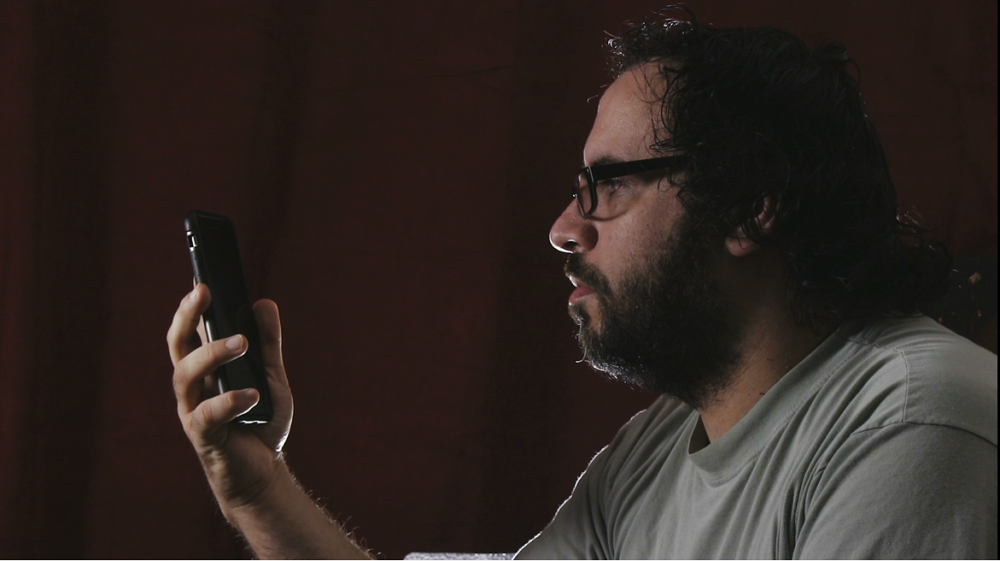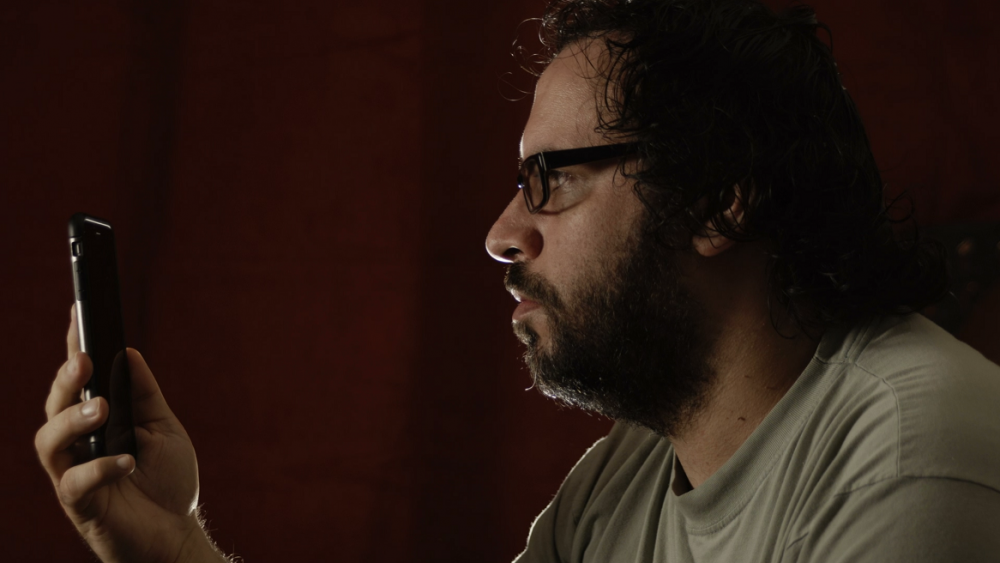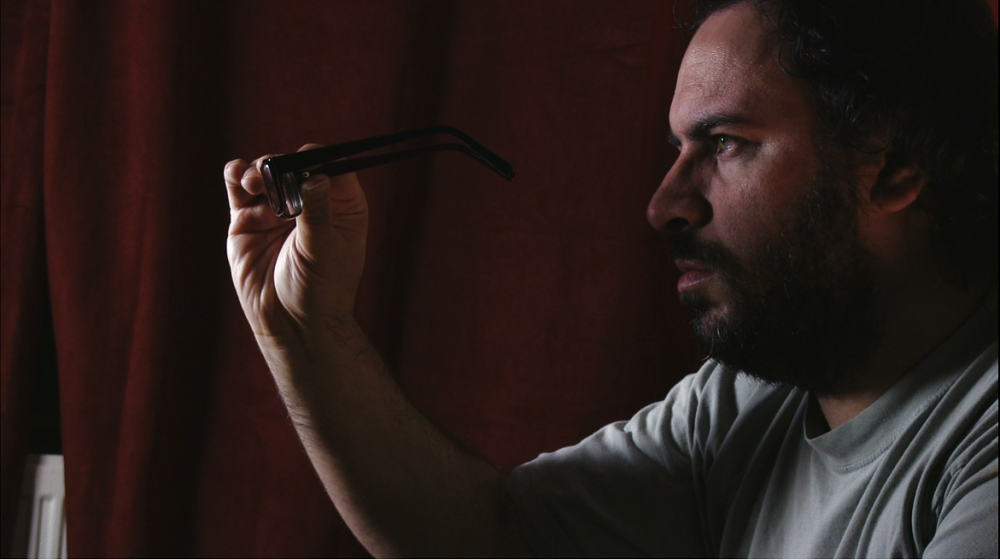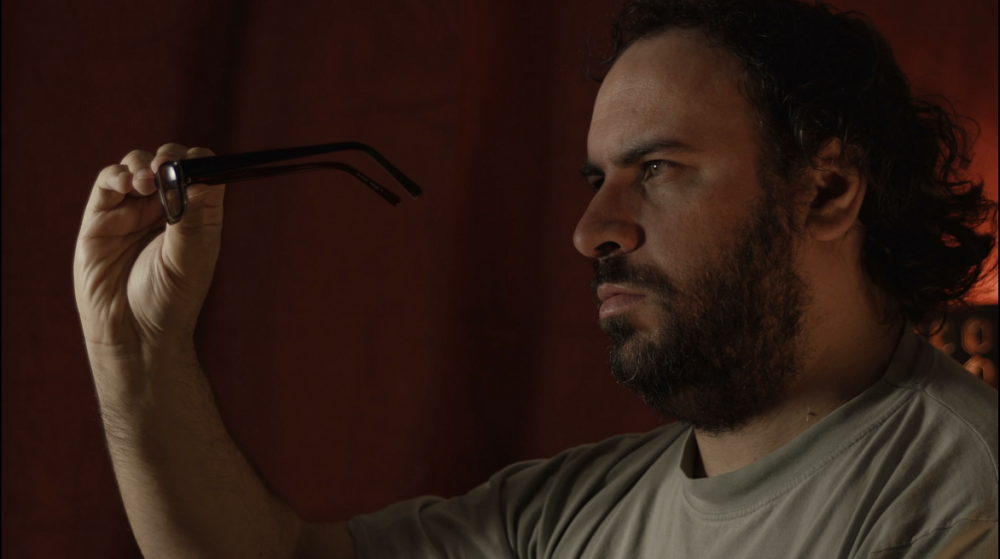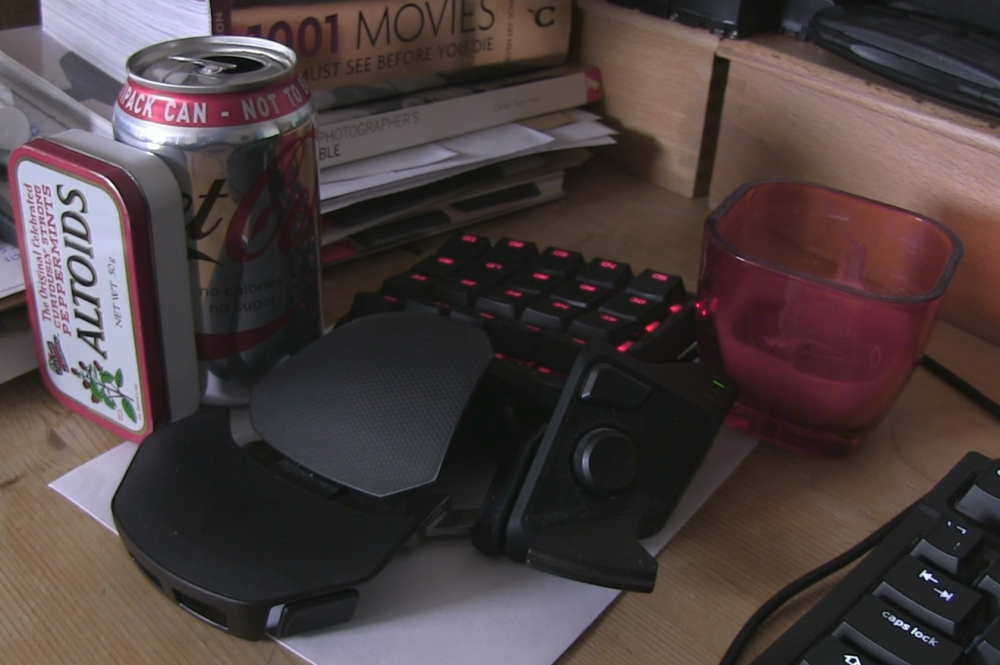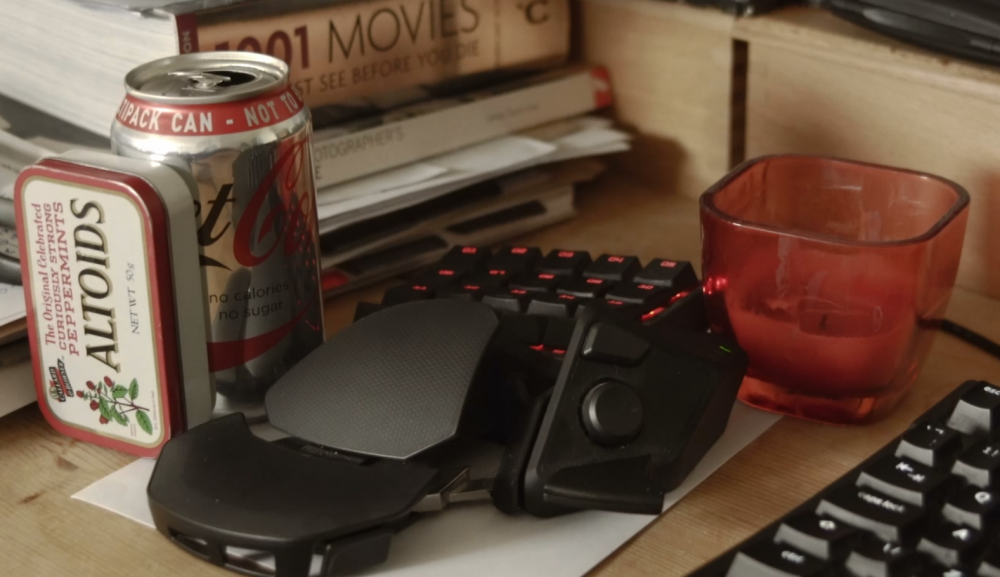-
Posts
125 -
Joined
-
Last visited
Content Type
Profiles
Forums
Articles
Everything posted by DayRaven
-
Hi guys, Some friends of mine are having a bit of a problem with a video they made - there's this wierd strobing effect over one of the angles. He told me that he can't even export the video again, so I'm thinking something in his editing suite - I'm trying to get a hold of him to get more details, but for now, may i leave the video and canvass some suggestions? Thanks a lot! Raven The effect can be seen at 5:10
-

Sony A6300 review (rolling) - Striking image but nagging issues
DayRaven replied to Andrew Reid's topic in Cameras
8bit 422 over HDMI, I am awaiting my speedbooster, but there has been a manufacturer delay according to my retailer -
MattH, no-one has any issues with your skepticism, in fact I think we all really rather agree that it is sensible to wait until we can see the results of the camera, and it's support network. DBounce however was not being skeptical. His gambit is that Kinefinity are conterfeiting prores, as evidenced by his link to a federal counterfeiting website, on the basis that they are a chinese company. "China doesn't need permission do they?" When everyone pointed out that his evidence was shaky, and the full picture indicates that they are in a convoluted process of getting the licence legally, (which has now been confirmed to be the case by Kinefinity) he went quiet. that was until he saw the rotated buttons, when this became evidence of their poor quality control. In my opinion that's just as bad as not being skeptical - either being a fan or a hater of an unreleased product are just as bad as each other. If I were to apply skeptical thinking to DBounce, I would suggest he has been prone to jump to conclusions, and make somewhat xenophobic statements, thus when he states an opinion about a chinese company, my skepticism tells me not to take his opinion at face value and triple check his evidence. We all know you don't get to see Apples, Nikons, Canons or Samsungs pre-production models, they employ consultants and maybe even have departments dedicated to hiding pre-production electronics whilst they are being tested at that level. Remember the preproduction iPhone that someone snapped being used on a train? It looked like crap and they got a roasting in the clickbait press for it. Try to find that picture now. They pursued every copy of that photo that was published with c&d letters, because they know it looked like crap. Is that really what we want kinefinity to be doing, because that little skeptical part of me tells me that if DBounce found out that Kinefinity was trying to hide their pre-production flaws, he would be presenting this as evidence that they couldn't be trusted.
-
To be fair, when you have a camera with serious rolling shutter and 4k (a6300, I'm talking about you), a "crop pan" is brilliant
-
It's almost certain that they are not manufacturing their own microswitches, but buying in from a factory which makes microswitches for millions of different products. They will be the smallest of the small customers, and probably got sent switches with the wrong orientation of cap. It happens, especially with micro-scale initial orders, that's why pre-production exists, they will have discovered the error on assembly and that is the stage where they can correct it in their next order. Delaying their launch for such a hiccup would be business suicide, and that would be a decision that would make me question their reliablity.
-

Sony A6300 review (rolling) - Striking image but nagging issues
DayRaven replied to Andrew Reid's topic in Cameras
The 4k image is nice, and hard to beat at any price range, but it's the overheating. I've never had my camera overheat, even under stress testing, so good copies do exist, but I would be dishonest to suggest that the chance of getting a good one is even close to acceptable. There are tricks you can do with ram heatsinks, and similar, especially if you can cope with the articulating screen losing it's articulation, but how many times are you going to tolerate it overheating at a wedding? It depends I guess on how you use it - if it's strictly a camera where it's nice if it gets something, but you never rely on it to get the product absolutely perfect, then why not, but if you think that it could let you down even once, well, it's up to you! -

Sony A6300 review (rolling) - Striking image but nagging issues
DayRaven replied to Andrew Reid's topic in Cameras
For what use? I'm a user, and the only use i can reccomend it over any other camera is if you want a small interchangable lens camera that will take great shots no matter what you are photographing, holding its own in sports, landscapes, portraits etc - though a compromise against larger cameras or cameras specializing in a narrower area of use. I couldn't reccomend it over others as a video camera, unless 4k is REALLY important to you, and even then, it has it's issues. It's also the best emount crop camera, if you're into vintage glass photography, it's a seriously good camera. tltr: Photography, yes, video, no -
Impressive as the article is, it makes me want a DSO Trump more than ever
-
It's not quite differently for each object - your brain can correct zones differently, but it's not great at it, and things like hormone levels can affect it greatly, a simple fight or flight state can turn your vision black and white in some zones! Definately think twice, depending on your sensitivity to WB issues, it's not really reliable, and it sounds like you are sensitive to them Try to get it perfect for you in camera, especially with 8bits, but don't expect everyone else to see perfect for you as perfect for them! Even when you're trying to shoot a realistic scene colourwise, you're still making artistic decisions, especially with the limitations of technology and some people just have slightly different expectations of correct WB. It's definately worth investing in a colour card with fleshtone panels on it to play with, set up a few scenes, lit different ways with the card in it, so you can see and get a feel for how your camera handles your white balance adjustments - experience and practice is the real key
-
Imagine you have a card that is a theoritical perfect white. Any visible wavelength which strikes the card is reflected, none are absorbed. The sunshine has only a few wavelengths missing or reduced, so let's say photons with wavelengths R-O-Y-G-B-I-V (Red, Orange, Yellow, Green, Blue, Indigo & Violet) leave the sun. They then strike our atmosphere. As we know, by looking, the atmosphere scatters blue more than red, but at noon, the sun passes relatively little atmosphere before hitting your eyes, so at noon, the full compliment of ROYGBIV hits your card and bounces into your camera Now, it's nighttime. Very little light from the sun is around, so you switch on your lights at home. These lights are incandescent, or maybe an energy saver bulb made to replicate the yellow light incandecsents produce .The light is giving out red, orange, yellow and green in equal proportions to the sun, but it isn't producing as much blue, indigo and violet. Thus we can write that it gives out ROYGbiv. You bring your theoretical card indoors, turn on the lights and it reflects ROYGbiv. Less of the "cooler colours". You look at the card. Our brains are very clever, it automatically balances the picture, you know the card is supposed to be white, so your brain makes it white. Out of the corner of your eye, you see someone walk past your window. They look blue, the whole world looks blue, an anonamly of this automatic white balance. We point the camera at our card. Our camera is in manual mode and is not so clever, it sees, bouncing off the card ROYGbiv. If you had put a yellow card in front of it in the noon sun, it would have also seen ROYGbiv bouncing from it. As our camera is in manual mode, it does not understand the context of the picture. It has no cultural reference or memory of this card being white, it displays it as yellow because it sees less biv and more ROYG. Fortunately, our camera has an adjustment, so we can set a temperature. Skip the part where the scale we use is derived from black body radiation, just know, we can set our camera to be more sensitive to blue or red, and we tell it how sensitive to be to either with a scale measured in kelvin. We know our indoors light is producing a temperature of 2800K, so when we set our camera to that, our white card looks white again. However, when we take it back out into the noon sun the next day, our camera setting is telling it to be especially sensitive to blues (because our bulb was producing few blues), so our image looks blue. We dial it back up to 5600K and at this point, it is balancing the sensitivity of blues and reds equally. The image looks correct again. ----- I know you know most of that, but it's important to understand that the reality is, there are wavelengths of light missing, our brains compensate for that but the sensor of the camers shows what is really there. When this gets passed to the processors for processing, a white balances is applied, this is part and parcel of turning electronic voltages into colours. When you look at the screen on the camera, your white balanced eye sees the output of the monitor, and your brain is both clever enough to not confuse what you see on screen with the real object and stupid enough to try to WB to that in the section of your vision that the screen occupies. Badly. Also, the screen being yet another light source with it's own colour temperature just adds to the brains problems. As you have noticed, this is not reliable and, if you spend a long time looking through a viewfinder, the output of that eye is adjusted to compensate, similarly, if you ask people who have watched a movie with a strong colour cast throughout, they often didn't notice it because their eyes adjusted after a few minutes. That doesn't mean that you will be able to balance them to each other though - theoretically yes, if you can hold attention rigidly on both objects simultaneously without anything else moving in your field of view, but the reality is, this is an impossible thing to work towards. Basically, don't trust what you see, your brain is working against you by trying to work for you! As for the best method, well, the most accurate is to have a good lightmeter and a grey card, and use it religiously, every shot. The most convienient is to stick it in auto wb. You can greycard your camera and use it's inbuilt metering system, you can adjust the WB only when the lighting changes drastically. I expect there are more methods, these are the ones that work for me, depending on how important quality is, how quick I need to be etc. And, yes, the whole point of a grey card is to give your camera a surface with no colouration of it's own to bounce every wavelength accurately to be metered - it's trying to be our theoretically perfect card. They can be suprisingly expensive, but as we've learnt, we can't trust our eyes when they tell us that the piece of paper we are using is white - it may be slightly yellow, it may be slightly blue, even if we see it as the purest white and that's going to screw us over by a couple of hundred K. Don't try to go for reality either, for starters, actual reality looks terrible and none of us can see it, secondly, we all develop our internal WB differently, with variation depending on our genes and our upbringing, and reality for us changes constantly over time as well as our brain constantly adjusts. Go for what looks good to you on the day.
-
I'm sorry, you make completely false statement, I gently correct it, but I'm the one with the problem? If you want to go off topic and have a private conversation with me, use the pm system.
-
Zeiss didn't do an 80mm in C/Y mount, and the 85's they did do are world class, two of the finest lenses ever made. The 40 is ludicrus to try to use as a result of it's size, and why would you when the 35's and the 50's are so superb?
-

I'll be at NAB, what would you like me to check out?
DayRaven replied to Jonesy Jones's topic in Cameras
Edelkrone? Just to get a feel for their products, they look excellent but get mixed reviews. They have 5 new products to unveil as well. -
That looks like a nice cage, I particularly like that the camera can stay on it's photgraphy QR plate inside, you can potentially pull it out and go into photography mode really easily. They deliver to italy from the website for only 10 euros, so you should be able to order it directly and get the quoted price?
-
Electronic shutters have zero wear.
-
You're welcome, any camera with electronic shutters - which is any camera with a video mode has zero wear on the mechanics when that is engaged. If in doubt, take a single still photo, listen to the sound with electronic shutter engaged and disengaged. When it is using the mechanical shuitter you can hear, and often feel the mechanism working. Do a test shoot in your chosen mode, just a few seconds won't put any appreciable milage on your camers and it will quickly be apparent from the noise whether you are or not putting wear on the camera Good luck and have fun!
-
If it's in a video mode - options 1, 2 or 3 from my post, it won't use the mechanical shutter, so you're fine. If you're using option 4, manual stills mode, you must ensure you engage the electronic shutter, not the mechanical one because yes, it will put wear on the mechanism
-
There can be, in theory, but there's not. Edited - wow, that sounded way more confrontational than I intended, sorry!!!
-
No, remember Sony raw files don't have any colour information in them, the mosaic is interpreted by whichever raw processor you use. It hasn't been interpreted into RGB in camera, unlike the Foveon sensors, so it's your software that turns the voltage readouts into colour and luminance. The sensor image data isn't "white balanced, in the same way that if you put a voltometer across two pins of an xlr cable, the differential of voltage you read isn't in itself soprano or baritone, when you interpret it, then you decide where and how the pitch comes.
-
I don't know specifically with the G7, but there are four ways and the G7 will be able to do one for sure: 1) Set your frame rate very low, e.g. 5fps - This will give you that stop start motion effect. Set your shutter speed very long, e.g. 1/5 of a second - This will give that motion blur in each frame. 2) Set your frame rate to the same as the rest of your project, e.g. 25fps Set your shutter speed very long, longer than theoretically possible with the fps, e.g. 1/5 of a second ----- If your camera lets you choose a very low framerate, or a shutter speed much longer than your framerate, then choosing method 1 or 2 will give you easy, quick predictable results. Not all cameras do though, so you may find you can only choose 1 or 2 not both, or maybe you can't choose either, in which case you will have to use 3 or 4 below: ----- 3) Switch into timelapse mode, set the number of pictures taken every second to a low number, e.g. 5 Set the shutter speed very long, e.g. 1/5 of a second 4) Set your camera to Manual Stills mode, choose an electronic shutter to reduce wear and tear, set your shutter speed long e.g. 1/5 of a second Choose a burst mode, it's worth investigating third party remotes if your camera has limited burst modes. Stitch the resultant batch of photo's together into a video clip in post process ----- These options can be fiddely to get working properly, a good timelapse mode can give you a great many options and when you understand, you can use them to get excellent results. Setting your camera to M mode in stills can be an exercise in frustration, but when it works well, you can get the highest quality results, especially if you shoot in raw, but expect to spend a lot longer getting it right both in camera at the time and in post process.
-
As promised, skintones with the Sony and Canon - the shots with the mobile phone are the colour controlled, each and every light source matched, was a highish quality apurture LED panel. The shot where I'm cleaning my glasses has the unholy trinity of my cheap chinese LED with horrible green cast, a daylight balanced hobby light and an incandescent bulb (as well as the normal room energy savers, though they are comparitively so dim, they really only colour the backdrop) And yes, I know I need a haircut. I have to say, neither camera handled the difficult WB well, but one absolutely fell to pieces. As promised, I won't pull a gotcha and reveal the cameras later, so feel free to discuss the colour science differences freely without worrying about being embarassed later. I will say, the sony is a consumer grade camera while the canon is a professional product, furthermore, I shot both in either log or cine profile and graded each, by boosting the saturation and curves only, to give each camera it's best image I am capable of delivering - best in terms of seeing what the colour is doing. Lenses were Canon L and Contax Zeiss. To get us kicked off - Camera 1 has a magenta cast compared to camera 2's green cast. I prefer the skintones of Camera 1 but camera 2 looks more like my skins actual colour and once the green cast is corrected is more accurate but less flattering skin. Camera one goes to all hell in difficult white balance, but camera 2 is not much better, both really accentuate the reds and I find both unacceptable.
-
Will do - Though it'll have to be my ugly mug I'm afraid. I will set up a well lit scenario as well as a difficult WB scenario, again, I'm interested in pressuring the Sony's weaknesses and white balance is one of them. Yes, the issues only seem to be present in videos, not many people have any complaints about Sony camera's still quality. Edit: Just waiting for my light's batteries to charge
-
I'm less interested in whether you like it or not, and far more interested in statements like "Sony's reds are all magenta" and the like - because for those who do use Sony - and please bear in mind, I use Blackmagic at the moment, I have Sony's for stills only, so have no dog in this race either - this information is really, really useful. I'm not presenting the two stills above to prove some BS ego massaging point, more to help nail down exactly whay Sony colours are doing and to help people get better results with their cameras! I'm at a stage where my Pocket camera is perfect for me, but as a result of my stills lens collection, in a year or two, Sony will be a front runner for me, so getting accurate understandings of Sony's shortcomings in the eyes of people like you, who has never, not ever liked it will be crucial in making a decision - please don't think I'm attacking your view, I want to work with you and people like you. I'm not going to give the answer as to which brand produced which image above, because I want people to feel safe in comparing the two images critically, without fear of being publically wrong.
-
The test was part of a deliberate attempt to screw up the sony wb - I'm trying to identify exactly what it's doing and what trips it up. I can say for sure that the Sony was struggling
-
Now you're moving from opinion to measurable fact. If Sony's reds are magenta, you should find it trivial to tell me which of the following was from a Sony and which was from a Canon. Both direct from camera, no editing. Both set to the same white balance and the scene was illuminated with an incandescent bulb and natural sunlight, with a cheap and nasty LED with significant green problems.



